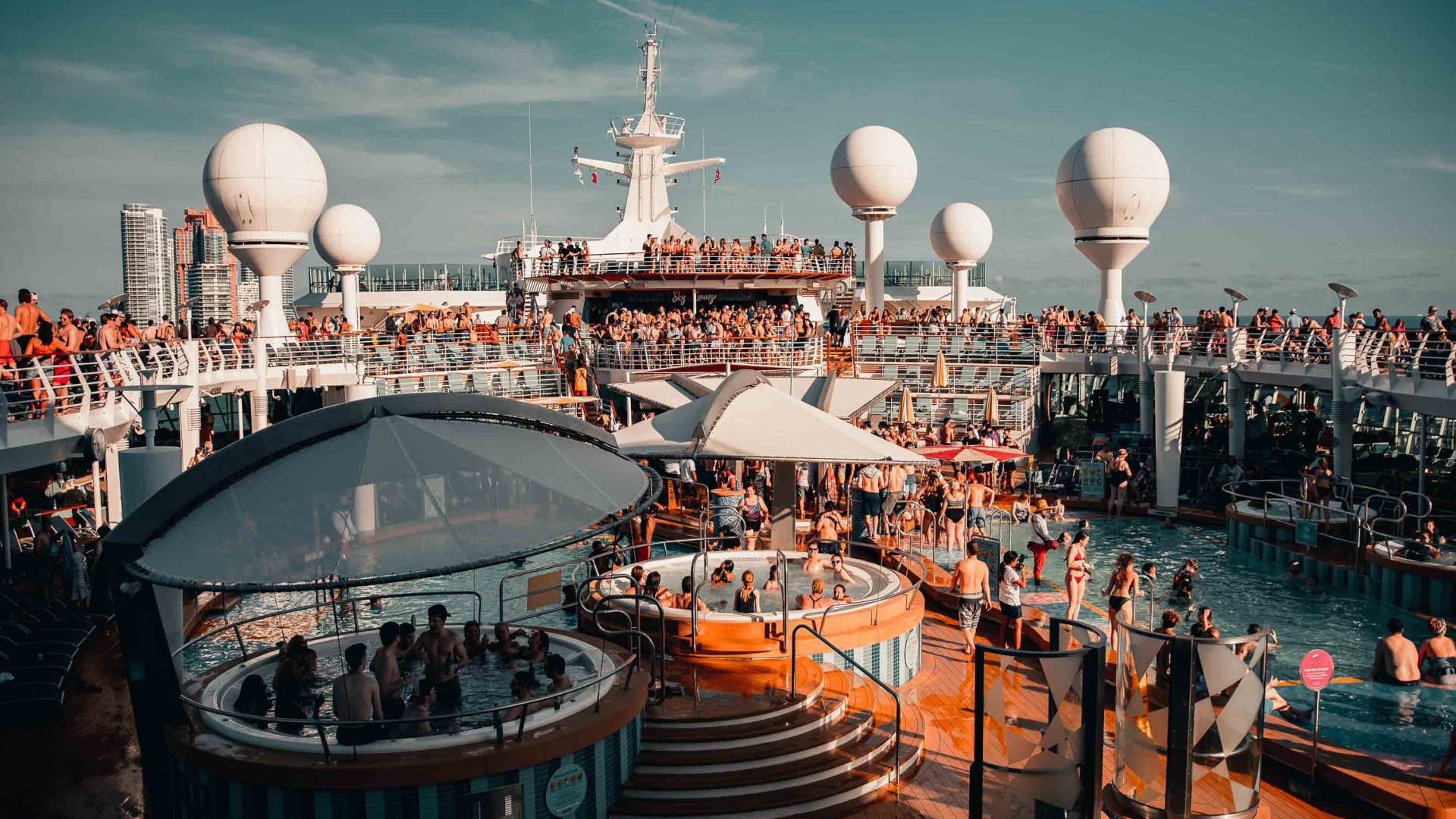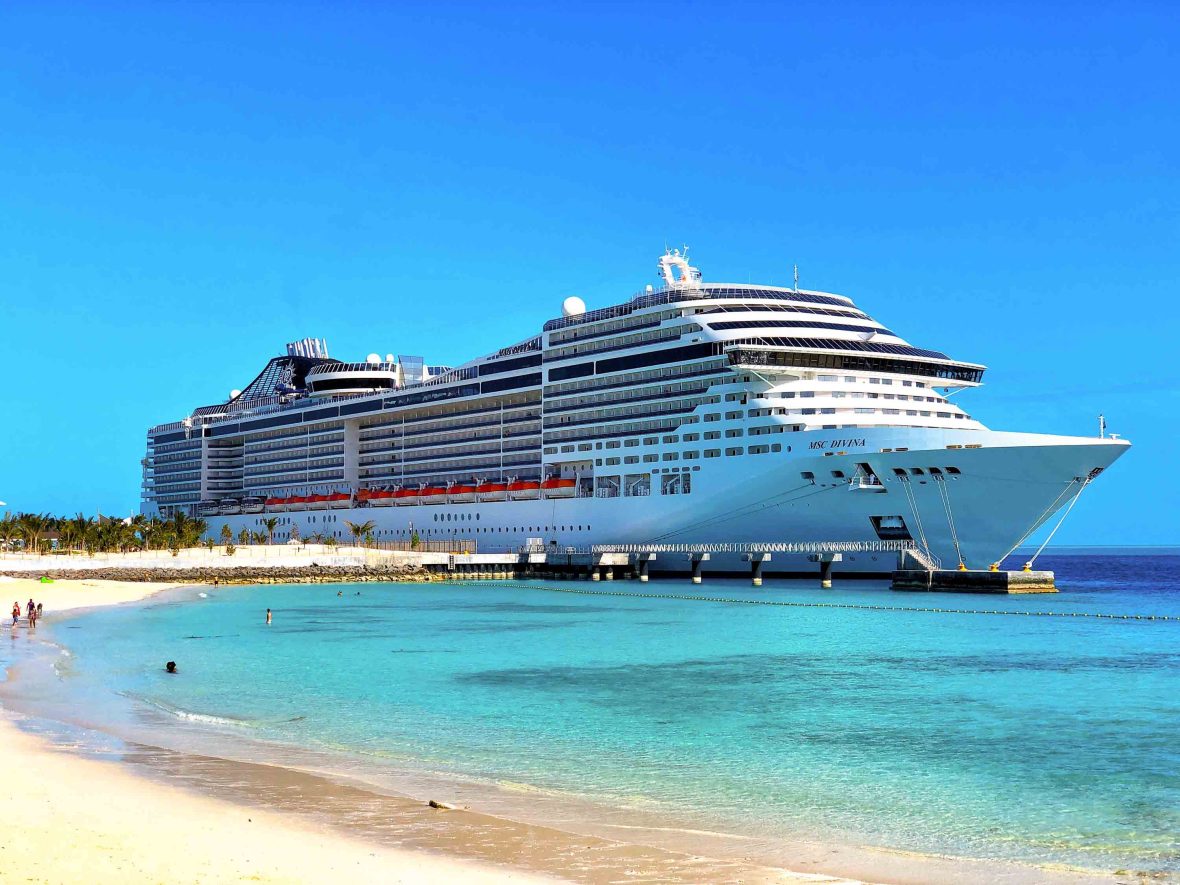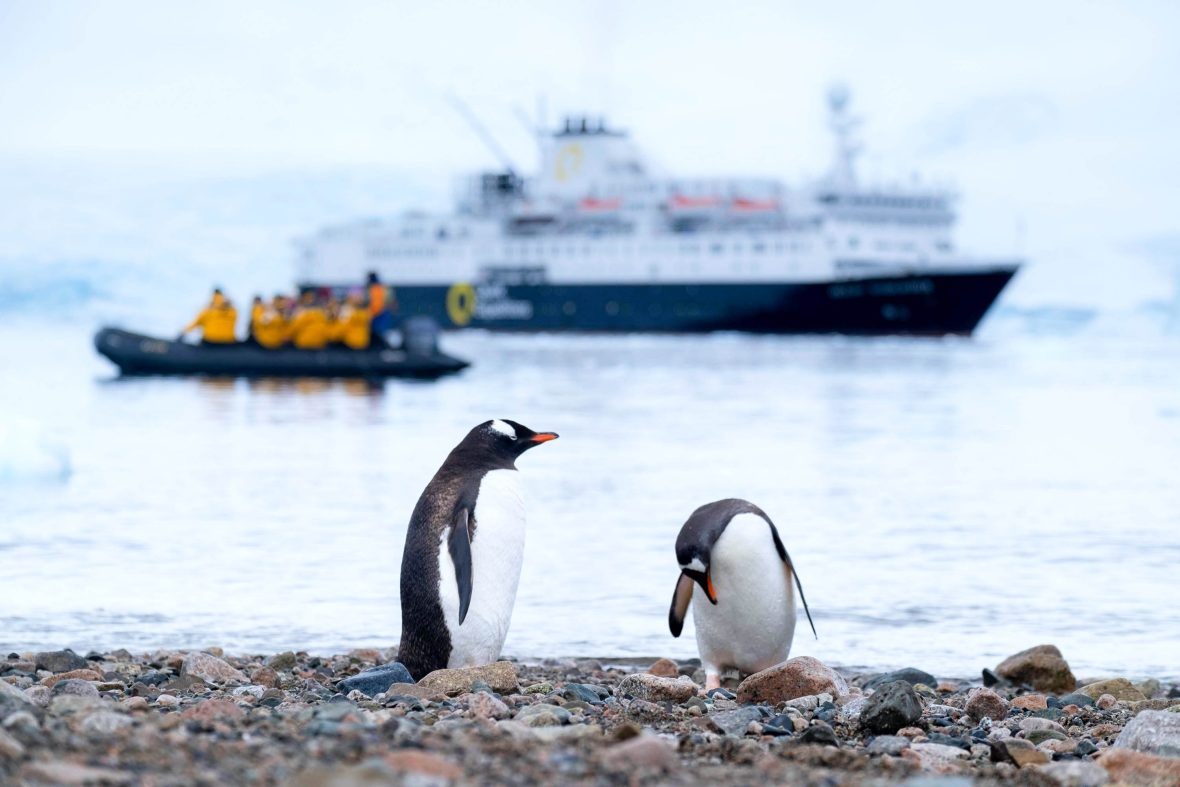
As the world’s largest cruise ship prepares to set sail in 2024, columnist JoAnna Haugen explores whether cruising, for all its bad rep for food waste, tourism leakage and overuse of resources, can ever be considered a positive mode of travel.


As the world’s largest cruise ship prepares to set sail in 2024, columnist JoAnna Haugen explores whether cruising, for all its bad rep for food waste, tourism leakage and overuse of resources, can ever be considered a positive mode of travel.
‘Home’ to nearly 10,000 people, Royal Caribbean’s record-breaking Icon of the Seas has eight neighborhoods, a water-focused performance space, large central park, massive waterpark, numerous bars and live music venues, and more than 20 dining options.
Set to sail from Miami in January 2024, Caribbean-bound, the world’s largest cruise ship is 1,198 feet long, 20 decks high, and weighs 250,800 gross tons—that’s six percent larger than Wonder of the Seas, a fellow Royal Caribbean ship and the current record-holder that made its inaugural voyage in 2022.
But it’s not just the size of the boat that’s breaking records: Its expansive waterpark, Category 6, will be the largest at sea with six record-breaking slides, including the tallest waterslide at sea, and the first open freefall waterslide on a cruise ship.
And if you’re horrified by the mere thought of this monstrosity at sea, you aren’t alone.

Among advocates for sustainable and responsible travel, cruises—and cruise ships—have a notoriously bad rep. For one thing, they are often exclusively traveler-centric spaces that cater to indulgence, with reports of passengers wreaking havoc on port communities by arriving in unmanageable numbers and using resources with minimal financial benefit. And that’s to say nothing of cruise ships’ environmental footprint, which includes harm to the air, water, soil, marine habitats, and wildlife.
Yet, even as Royal Caribbean promises to deliver two more ships in its ‘Icon’ class by 2030, Norwegian-based Hurtigruten has plans to introduce a zero-emissions ship for 500 passengers by the same date.
I believe one way to begin separating the ‘good’ from the ‘bad’ is to consider a cruise’s intention. Mega cruises, of the type taken on Icon of the Seas, are designed with the ship as the main attraction.
And that’s not all: Hurtigruten operates with integrity woven deep into its business operations and across its brands with a four-pillar sustainability plan, transparent reporting with an annual ESG (Environmental, Social, and Governance) report and policies, and a deep commitment to diversity, equity, and inclusion including a Black Traveler Advisory Board.
I am one of those responsible travel advocates, yet as easy as it is to defiantly oppose Icon of the Seas and write off all cruise companies, ships, and experiences, I think it’s more prudent to step back and consider the nuances at play. This is a “yes, and…” situation: Yes, small cities on the sea focused on extravagant hedonism rightly deserve a side eye—and companies with smaller ships prioritizing sustainability, relationship-building, and learning opportunities deserve a second look.

I believe one way to begin separating the ‘good’ from the ‘bad’ is to consider a cruise’s intention. Mega cruises, of the type taken on Icon of the Seas, are designed with the ship as the main attraction. With spas, pools, and entertainment from sunrise until long after sunset, there’s no reason to leave the boat—and, according to a 2017 survey, more than one-third of passengers don’t.
When it comes to tourism dollars spent in the destination, research in 2022 published on Science Direct showed the lowest spending off the ship was around €EUR25-35 per person in various Mediterranean and Latin American destinations, but some studies show it higher, at EUR€45-75. Meanwhile, spending in Caribbean, North American and Australian ports can be up to €200 per visit. However, as the research says, “this study introduced the notion of the tourist bubble, noting that the majority of cruise visitor spending occurs within a very limited geographical scope.”
This differs from expedition cruises, such as those offered by Hurtigruten, which focus on active learning and experiences. The ships are smaller, they access hard-to-reach inlets, and experiences focus on intimate, experiential activities.
Several years ago, I visited the Galapagos Islands with Lindblad Expeditions-National Geographic, an expedition cruise company focused on natural, cultural, and historical heritage knowledge and protection. We spent our days hiking with local guides who provided context on the landscape and history, snorkeling among sea turtles, and learning how to take photos of blue-footed boobies and marine iguanas. Back on board, we were invited to presentations on topics like artisanal culture in the Galapagos, and, with any spare time I had, you could find me buried in the onboard library.

Then there are river cruises—and for older members of my family, river cruises are a popular choice. These experiences make travel possible for people with accessibility challenges and dietary restrictions—personally, I feel that’s also a benefit worth considering when weighing the value of cruises. Additionally, there are island destinations reliant on tourism that can only be reached either by boat or plane, and the environmental impact of cruising might be the better option.
I’ve taken one river cruise, on the Danube during the winter holidays, which was aboard a modest ship with a couple hundred passengers. It was more intimate, with opportunities to get to know the other passengers instead of becoming lost in a tangle of onboard entertainment. However, I was uncomfortable with port calls when vessels docked several boats deep.
Regardless of where they go or how they journey, travelers must consider the impact of their presence in the spaces they inhabit and move through.
And that’s where I find myself coming back to the ‘yes and…’ piece of the cruise conundrum. Despite the “book it and forget it” ease of cruising, I wouldn’t book another cruise without some soul searching: I’d be thinking carefully about booking a cruise versus another type of trip. I’d consider the cruise’s purpose.
And, importantly, I’d do more research than I have in the past. Scrutinizing a cruise company’s sustainability commitments and actions—and being willing to ask hard questions when something doesn’t sit right—is important. For example, Friends of the Earth publishes a cruise ship report card that offers insight into the environmental footprint of 18 major cruise lines and 213 cruise ships—this can help with this research, though it’s imperfect in that it’s primarily focused on mega ocean liners.

That said, I believe the debate about cruises and whether to book them needs to go beyond the boat. Hurtigruten might espouse sustainability, but is it even ethical to book a cruise to Antarctica, where the average visitor between 2016 and 2020 melted the equivalent of 83 tons of snow, largely due to emissions from cruise trips?
Despite the fact Venice is in the process of rerouting cruise ships to another terminal, it is heaving under the weight of overtourism, so is it appropriate to book a cruise that stops there?
And in 2020, the majority of local voters in Key West supported restrictions on cruise ships, opting to reinvent the port into a small-ship destination. This decision was overturned in 2021 and the controversy is ongoing. Knowing that, is it right for a cruise ship to dock there even though local residents were opposed—and should you be on that ship?
I admit that, in the past, I’ve carelessly climbed aboard mega ocean liners without a second thought. And, I’ve also swung to the other extreme and written off cruises altogether. But, I’ve come to realize that cruising, like any travel choice, is rife with complexity and contradictions. There may be obvious red flags—booking a trip aboard Icon of the Seas probably isn’t the most responsible choice even if you’re jonesin’ for a waterpark adventure—but the nuance found in any form of travel is found in cruising as well. Ultimately, regardless of where they go or how they journey, travelers must consider the impact of their presence in the spaces they inhabit and move through.
***
Adventure.com strives to be a low-emissions publication, and we are working to reduce our carbon emissions where possible. Emissions generated by the movements of our staff and contributors are carbon offset through our parent company, Intrepid. You can visit our sustainability page and read our Contributor Impact Guidelines for more information. While we take our commitment to people and planet seriously, we acknowledge that we still have plenty of work to do, and we welcome all feedback and suggestions from our readers. You can contact us anytime at hello@adventure.com. Please allow up to one week for a response.






Can't find what you're looking for? Try using these tags: